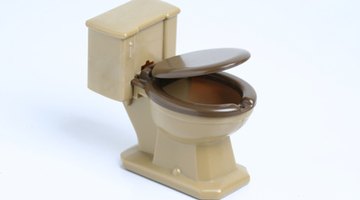How Does a Toilet Flapper Work?
Open any toilet tank lid, and you’ll see a collection of parts integral to the operation of the toilet. One such part, the flapper, comes in various models to suit different designs of toilet, but each model satisfies the same basic purpose -- allowing water to flow in and out of the tank.

A little primer on the workings of the flapper can help the homeowner in maintaining and replacing, if necessary, this essential part.
Location
The flapper is generally disc-shaped and made of rubber. The flapper is found at the bottom of the tank, submerged in water, and attached to the base of the overflow tube by a pair of hinges. Raising the flapper would reveal a hole of mutual size. It’s through this hole that water escapes whenever the toilet is flushed.
How It Works
Operation of a toilet requires a careful orchestration of its parts. Once the toilet handle is pushed, an attached chain pulls the flapper up and away from the drain hole at the bottom of the toilet tank. After allowing approximately 2 gallons of water to drain from the tank, the flapper resumes its former position, sealing off the drain hole. As the filler float falls with the water level inside the tank, it activates a refill valve, which in turn begins replacing water inside the tank. The float rises with the incoming water. Once the float reaches a certain level, the float causes the refill valve to shut off.
Flapper Wear
Chemicals floating in the water inside the tank can cause a flapper to deteriorate over time. The misshapen flapper may no longer form an effective seal against the drain hole, causing water to leak continuously from the tank. Flappers should be checked yearly to ensure that they are in good shape. A poorly fitting flapper can waste up to 200 gallons of water per day, according to ToiletFlapper.org.
Replacement
Replacement flappers can be purchased at your local hardware store or an online retailer. The procedure for removing and installing a toilet flapper first entails turning off the toilet’s water supply and then flushing the toilet to drain water from the tank. The flapper is unhinged from the overflow tube and detached from the lift chain. Once a replacement is installed, following the reverse of the removal procedure, the flapper chain is adjusted to prevent binding during operation of the flapper. A chain that is too short will not allow the flapper to seal fully against the drain hole, and a chain too long may become entangled with the flapper, once again preventing the flapper from forming an effective seal.
References
Photo Credits
- toy toilet image by Wayne Abraham from Fotolia.com
- toy toilet image by Wayne Abraham from Fotolia.com
More Articles



